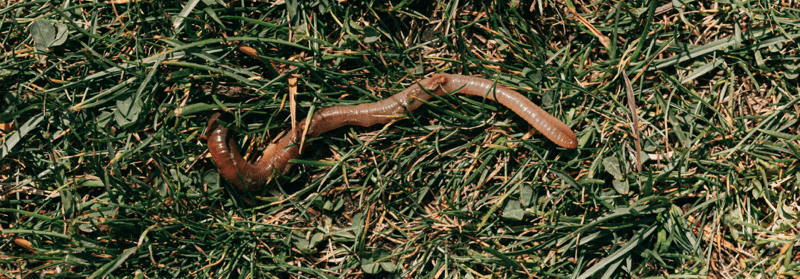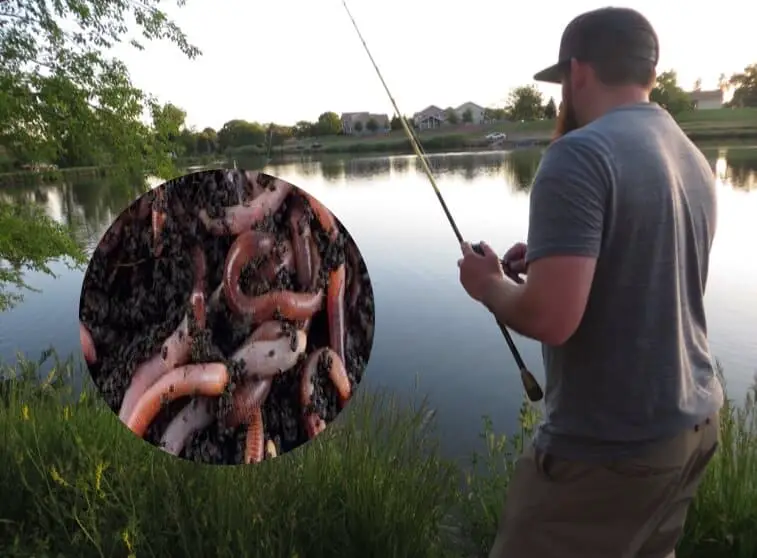Fishing is a fantastic pastime. To be out in nature, relaxing, enjoying the peace and solace is just marvelous. But sometimes, it would be nice to pull in the “Big One.” Well, when it comes to Bass fishing, bait plays a big role, so can you catch bass with worms and nightcrawlers?
You can catch most species of bass with nightcrawlers and other worms. Bass have a diverse diet, eating almost anything they can fit into their mouths. Although they don’t frequently eat worms in the wild, using worms as bait is still viable.
Did you take the bait? Now we know that the bass will. So it comes time to reel it in, but the victory is not assured. Choosing to use worms as live bait is part of the process; making sure your setup compliments that decision is next!
Using Live Night Crawlers As Bait
Fishing is altogether simple and complicated. Every angler has their own tried and true methods, along with lures and bait that they swear by. However, many bass anglers agree that if you decide to use worms (especially nightcrawlers), you can expect favorable results. It all comes down to technique, setting up your rig, patience and a good understanding of the area you are in.
There are some benefits in using live worms as bait over lures. Some of these include:
- Lures try to mimic the movement of prey items. By having something alive and moving, we are already a step ahead. Bass tend to strike at things that move, so having that natural motion is a benefit.
- When a nightcrawler is in the water, it releases pheromones and other scents that attract bass and other fish to them, reducing the need for chemical scents.
- Considering that worms are organic and produce their own scents, harmful chemicals are not introduced into the water body.
- Worms are generally cheaper than synthetic lures and can be “farmed” right at home if so desired.
When fishing with nightcrawlers, a different approach needs to be taken. There is a lot less action and a lot more waiting for the fish to bite. Worm bait does not require you to retrieve and cast as often. For the most part, the worm will do most of the work while you remain inactive and let the bait do what it does best, wriggle and squirm, and let the fish know that it is there.
When purchasing or collecting the worms, you need to make sure that they are alive and well. It does not help if you collect dead worms that have lost the ability to wriggle; you might as well opt for a lure then. Once obtained, try and ensure the longevity of your worms by:
- Handling the worms as infrequently and as softly as possible.
- Keep their temperature as constant as possible. When you need to change their temperatures, do so gradually. It is recommended to place them in the refrigerator at 40F.
- Any dead or sickly-looking worms need to be removed to prevent contamination of the rest.
- Don’t mix your worm collections. Keep the old separated from the new as they could also compromise each other.
It is also paramount to familiarize yourself with the specific legislation for the area you will be fishing in regarding the use of live worm bait. Most of this information is available on government websites. Bait and tackle shops in the area are also a good source of information.
Setting Up Your Worm Rig
Once you have your worms, it’s time to set up your rig to get the maximum benefit of using worms as bait.
Some popular setups that are used when fishing with worms/nightcrawlers are:
- Using bobbers and floats: Pretty plain and simple. Put a bobber or float on your line, hang a worm underneath it, and wait and see what bites.
- Another popular method is the Carolina Rig, especially for deeper water fishing or when there is a wind or strong current. The benefit is the extra weight added to the line, a reasonable distance from the bait (approx 1 foot).
- A versatile setup is the drop shot rig. This method can be used in shallow or deep water, as well as thick vegetation covering. The benefit is that the worm is suspended in the water column; therefore, an active worm will be quite identifiable for bass.
- If you are fishing in areas with lots of vegetation, rocks, or a dock, a jighead is a good choice to not get yourself stuck.
- A simpler alternative to a Carolina rig is to use a simple split shot rig. This provides a bit of extra weight to the line to punch a bit deeper through the water. Especially useful in shallower water. An Aberdeen or bait holder hook sized 4 to 8 is recommended, along with a BB-sized split shot.
In terms of rod size, it is recommended to use micro-light gear (1 to 6 pounds); however, medium to heavy spinning rods (10 or 12 pounds) will also work, especially when targeting bigger sized bass (10 pounders).
Some Techniques For Catching Bass With Worms

Generally speaking, when you fish with worms, you won’t be actively searching out fish. The reason for this is that it is a very slow process (you will either be stationary or very slowly reeling in), so it helps to have a rough idea of where the bass may be hiding during the day. This is because nightcrawlers (in particular) tend to break off from the hook if handled too roughly. This is where having local knowledge comes in handy.
When baiting the hook, it is recommended to hook the worm through the head once. This gives it enough leeway to wriggle. Another option is to hook them through the tail, but they stand a better chance of breaking off the hook.
If the worm is large and you are not attempting to set a record, consider cutting it in half. Consequently, if the worms are small, hook more than one, but try and always go through the head once.
Once you’re hooked up, it comes down to technique. As mentioned above, you will be reeling in slowly, only about 3 to 12 inches at a time (this is called a stitching motion), alternatively, a very slow continuous drag, with frequent short pauses. Remember, we are trying to let the worm do the work. If you know where the bass are, it’s best to cast in and wait for the worm to work its magic.
It is however important to check up on your nightcrawler from time to time. Once it stops moving, you need to replace it with a fresh one. Nightcrawlers tend to last longer in cooler water, and if you are quick enough, you can resuscitate it for later use.
Bass Eating Habits
Understanding what different fish eat helps us to figure out what bait will be most effective and why. There are various species of bass. The most commonly angled fish fall under the black bass varieties. These include large and smallmouth bass, as well as spotted bass.
Bass are predatory fish with a diverse diet, the range of which includes: worms, insects (dragon and damselflies), crayfish, smaller fish (minnows, perch, bluegills), reptiles (snakes, and lizards) and amphibians (frogs and salamanders).
As a rough guide, anything that can fit into a bass’ mouth is considered ”fair game” as food.
Worms are generally rarely eaten in the wild. The reason for this is accessibility. Most bass won’t often come into contact with worms while foraging, which means that, when anglers use them, the worms are a rare treat for the bass. According to Florida Fish and Wildlife Conservation Commission biologist Fred Cross, bass are opportunists and will eat whatever they can catch in their environment.
Conclusion
Fishing is an age-old pass-time and vocation, and since the beginning, worms have been effective bait. Although many pro anglers will probably not use them for personal reasons (some prefer the challenge and reward of using lures), if you want to catch a bass, a nightcrawler will catch you a bass. Just remember patience and local knowledge are as valuable resources as choosing the right worms.

